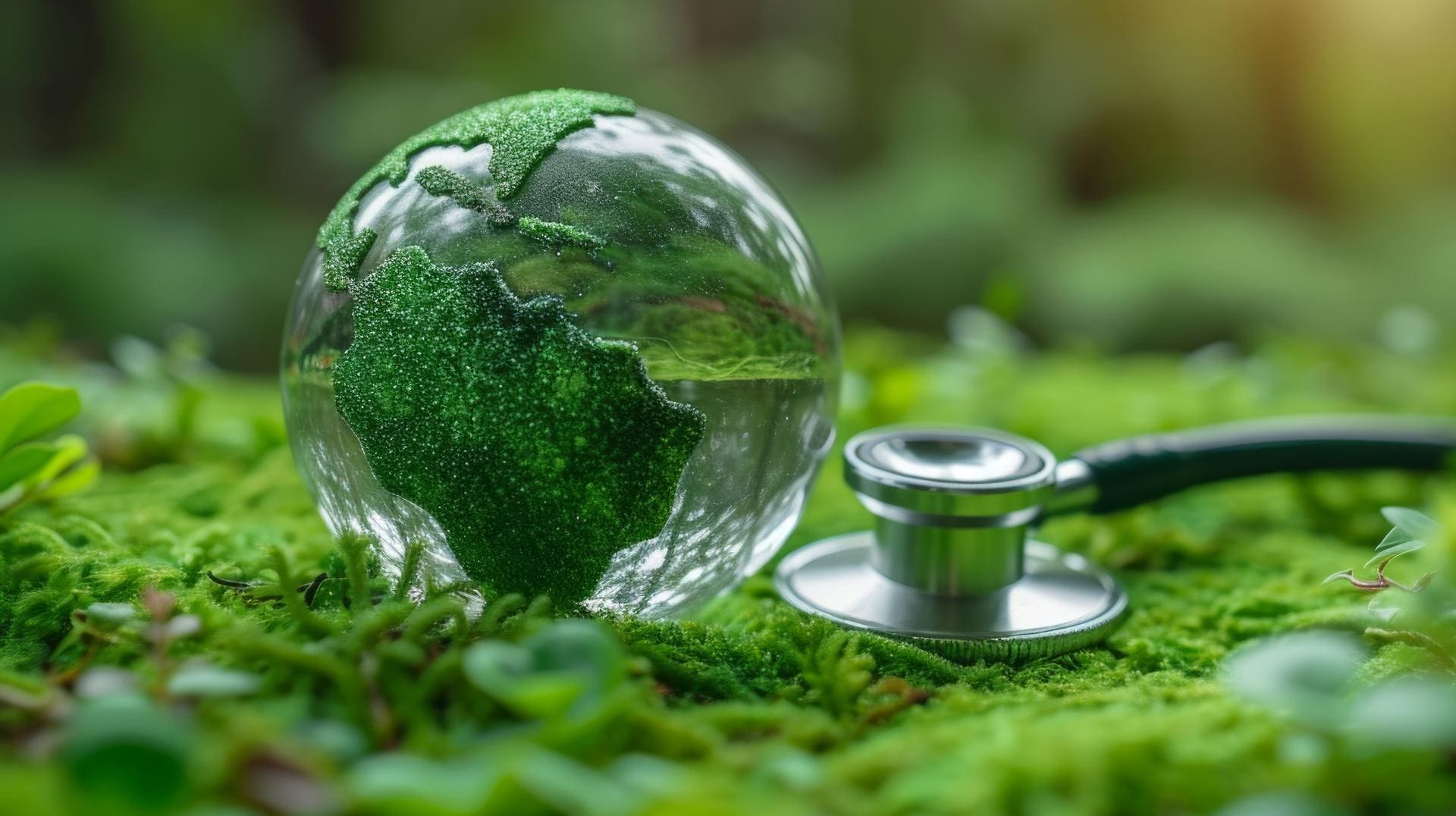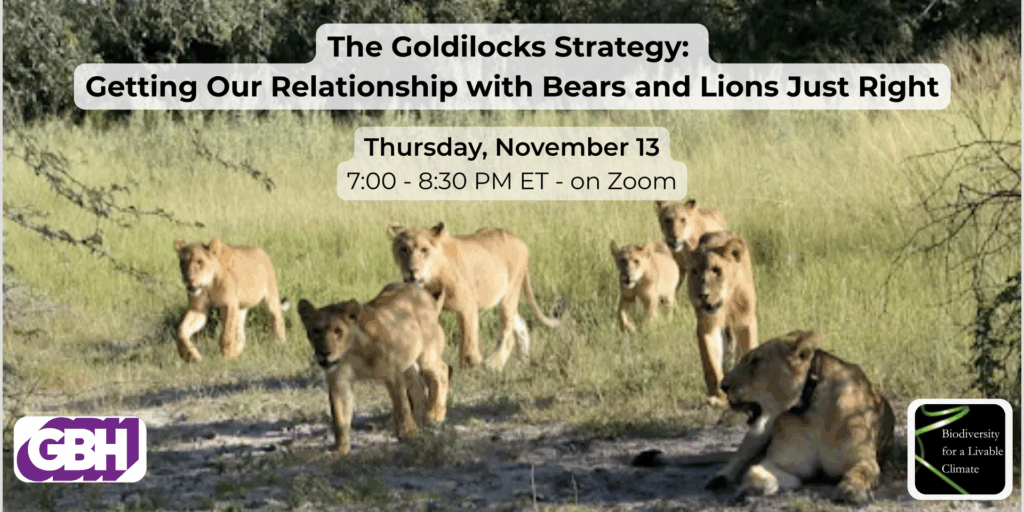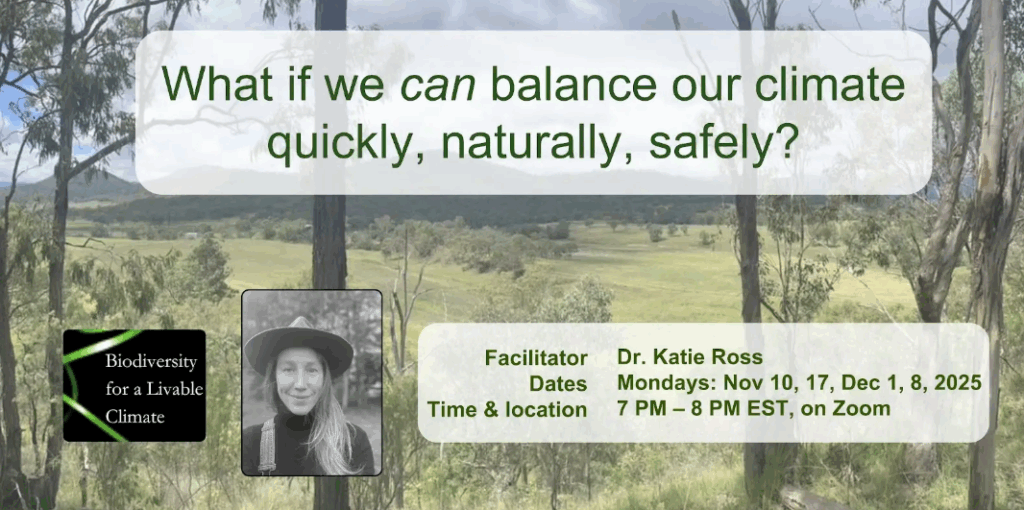What lizard is among the largest in the Western Hemisphere, has striking red eyes to reduce the sun’s glare, and has been called the “Gardener of the Forest” in their native ecosystem?
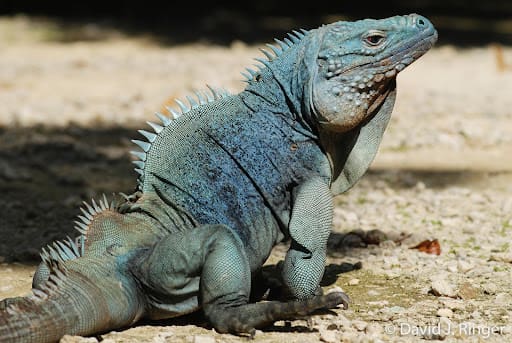
Image credit: David Jeffrey Ringer via iNaturalist (CC-BY-NC)
Big, Blue, and Totally Cool
As its name suggests, the Grand Cayman blue iguana is native to the largest of the Caribbean’s Cayman Islands. An example of island gigantism, the Grand Cayman blue iguana is also among the largest lizards in the Western Hemisphere, measuring five feet (1.5 m) from nose-to-tail, and weighing as much as 30 pounds (14 kg).
Adult iguanas are typically dark gray in color, matching the karst rock of the landscape. In the presence of other individual iguanas, however, they change their color to blue to signal to one another and establish territorial boundaries. Grand Cayman blue iguanas also exhibit sexual dimorphism, or noticeable physical differences between genders. Males are larger, are dark gray to turquoise blue in color, have more prominent crests along the back, and larger femoral pores (secretory glands which release pheromones, or chemical signals) on their thighs. Females are smaller than males, are typically colored olive green to pale blue, and have smaller and less prominent dorsal crests and femoral pores. Both genders have black feet, and, as equally striking as their skin color, have eyes sporting gold or blue-ish gray irises and red sclera. The red coloration of the sclera (the “white” part of the eyes in humans) is an adaptation to protect the pupils from the sun’s powerful glare in their tropical habitat.
Speaking of habitat, this iguana prefers dry, rocky forests in coastal areas of the island, but may also be found in scrub woodlands, semi-deciduous forests, and dry-to-subtropical, moist forests. Iguanas as a whole are rather adaptable, and can be found in manmade habitats as well, especially farmlands bursting with their favorite foods, such as flowers, fruits, leaves, nuts, and stems of over 45 different plant species. Although predominantly herbivorous, the Grand Cayman blue iguana has occasionally been observed feeding on fungi, insects, crabs, slugs, soil, small rocks, bits of shed skin, and feces.
The Grand Cayman blue iguana is diurnal, or most active during daylight hours. They begin their day basking in the sun to warm up, and at the end of the day, retreat to rock crevices, caves, tree cavities, and in more urbanized locations, buildings and piles of construction material. Adults are primarily terrestrial, and while not known to be arboreal (tree-dwelling), individuals have been observed climbing trees 15 feet (4.6 m) and higher. Younger individuals tend to be more arboreal. This iguana’s large size also comes with a few additional benefits: adults have no natural predators, and while their average longevity is not known, the species can live in excess of 50 years! One wild-caught individual (appropriately named Godzilla) who was transferred to the Gladys Porter Zoo in Brownsville, Texas was estimated to be 69 years of age upon his death in 2004. Notice how I said that adults have no natural predators? Hatchlings are preyed upon by the native snake the Grand Cayman racer, as well as rats, while iguanas of any age can fall victim to feral, free-roaming dogs and cats introduced by humans.
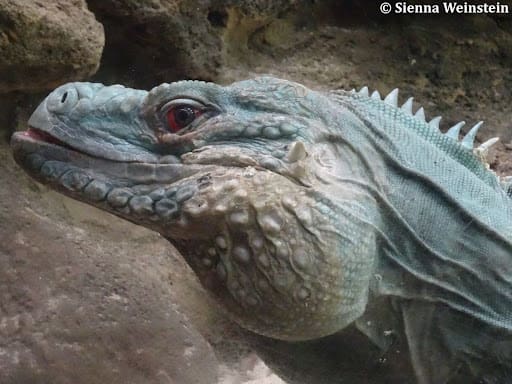
Image credit: Sienna Weinstein
An Important Lizard and an Ongoing Conservation Success Story
The Grand Cayman blue iguana is considered a flagship species of the Cayman Islands–a symbol of not only the area’s unique biodiversity, but also the broader conservation effort due to its public appeal as a strikingly colorful species of Grand Cayman. This iguana plays a pivotal role within its habitat as a keystone species–one that plays a crucial role in maintaining the health and diversity of their native ecosystems, as their actions significantly impact the environment and other species. As Grand Cayman’s largest native herbivore, this iguana helps distribute native fruit and plant species across the island via their feces. This has led to them being called the “Gardener of the Forest” by tropical field biologist and conservationist Ian Redmond–a worthy title indeed. Through this role as a living, breathing forest-growing machine, they help to maintain the delicate balance between the climate and vegetation necessary for all species to survive in the island’s ecosystem.
The main threats facing the Grand Cayman blue iguana are predation of adults by feral cats and dogs, habitat conversion (mainly from fruit farms to grasslands for cattle grazing), deaths from vehicle collisions, trapping and shooting by farmers, being mistaken for the invasive green iguana and retaliated against, and occasional illegal capture of iguanas for the local pet trade. In 2002, only 10-25 individuals were recorded, making this iguana one of the most critically endangered lizards on Earth. Thanks to an extensive recovery program, among other conservation partnerships, as of July 2018, wild Grand Cayman blue iguana numbers have rebounded to over 1,000 individuals, moving on the IUCN’s Red List from Critically Endangered to Endangered. Ongoing conservation needs for the Grand Cayman blue iguana include additional research to manage the genetic diversity of the species, controlling populations of feral cats and dogs, and continuous public education and outreach efforts to combat the threats this unique species of iguana still faces today.

Sienna Weinstein is a wildlife photographer, zoologist, and lifelong advocate for the conservation of wildlife across the globe. She earned her B.S. in Zoology from the University of Vermont, followed by a M.S. degree in Environmental Studies with a concentration in Conservation Biology from Antioch University New England. While earning her Bachelor’s degree, Sienna participated in a study abroad program in South Africa and Eswatini (formerly Swaziland), taking part in fieldwork involving species abundance and diversity in the southern African ecosystem. She is also an official member of the Upsilon Tau chapter of the Beta Beta Beta National Biological Honor Society.
Deciding at the end of her academic career that she wanted to grow her natural creativity and hobby of photography into something more, Sienna dedicated herself to the field of wildlife conservation communication as a means to promote the conservation of wildlife. Her photography has been credited by organizations including The Nature Conservancy, Zoo New England, and the Smithsonian’s National Zoo and Conservation Biology Institute. She was also an invited reviewer of an elephant ethology lesson plan for Picture Perfect STEM Lessons (May 2017) by NSTA Press. Along with writing for Bio4Climate, she is also a volunteer writer for the New England Primate Conservancy. In her free time, she enjoys playing video games, watching wildlife documentaries, photographing nature and wildlife, and posting her work on her LinkedIn profile. She hopes to create a more professional portfolio in the near future.
Dig Deeper
- https://en.wikipedia.org/wiki/Blue_iguana
- https://www.iguanafoundation.org/what-we-support/rock-iguanas/grand-cayman-blue-iguana
- https://ircf.org/grand-cayman-blue-iguana/
- https://www.iucnredlist.org/species/44275/2994409
- https://library.iucn-isg.org/documents/2013/Glass_2013_National_Geographic-2.pdf
- https://milwaukeezoo.org/visit/meet-our-animals/grand-cayman-blue-iguana/
- https://nationalzoo.si.edu/animals/grand-cayman-blue-iguana
- https://nationalzoo.si.edu/animals/news/keepers-favorite-grand-cayman-blue-iguana-facts
- https://www.riverbanks.org/animals/reptiles/cayman-island-blue-iguana• https://www.youtube.com/watch?v=Nd9Eu7av4hs

